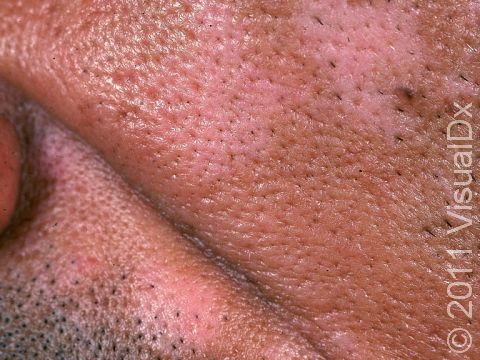Postinflammatory Hypopigmentation
Postinflammatory hypopigmentation is the partial or total loss of skin color (depigmentation) following an injury or skin inflammation from a skin disease. The pigment-producing cells (melanocytes) are damaged or destroyed in the healing process, resulting in the loss of pigment.
Who's At Risk?
Anyone can experience pigment loss, but it is often more prominent in individuals with darker skin colors due to the greater contrast with their normal skin color. Hypopigmentation can occur with any skin injury (eg, burns [especially deep burns], cuts, or surgery) or with many skin disorders (eg, acne, eczema, psoriasis, chickenpox, seborrheic dermatitis). Some medications may also cause skin lightening (eg, strong cortisone creams or products containing benzoyl peroxide).
Signs & Symptoms
There may be one or more macules (small flat, smooth areas) or patches (flat, smooth areas larger than a thumbnail) of white or lighter areas of skin. The size, shape, and area or areas affected are often in the same shape, size, and configuration as the preceding skin trauma or inflammation.
Hypopigmentation is more noticeable in darker skin colors due to the greater contrast between the lighter areas and normal surrounding skin. In lighter skin colors, hypopigmentation may be subtle.
Self-Care Guidelines
Stop any creams or lotions with benzoyl peroxide or strong cortisones.
You may be able to use makeup to cover the affected areas. Waterproof makeup is available for use on the face as well as the arms and legs.
In mild cases, the skin restores pigment on its own. In less severe cases, the pigmentation may take only a few weeks to return, while it may take several years for the pigment to come back in certain diseases and in areas of severe injury such as burns, or the loss may be permanent.
Treatments
Treatment of hypopigmentation will depend upon its cause.
Your medical professional may recommend topical pimecrolimus if the hypopigmentation is caused by seborrheic dermatitis.
Certain laser treatments coupled with topical therapy could help treat hypopigmented scars.
Visit Urgency
If there are only a few areas and you have no underlying skin problem, no treatment is needed. However, you should seek medical care if you have:
- Multiple unexplained lighter skin areas.
- A single lighter skin area with no history of previous injury.
- A lighter skin area that is numb or has lost sensation or feeling.
Trusted Links
References
Bolognia J, Schaffer JV, Cerroni L. Dermatology. 4th ed. Philadelphia, PA: Elsevier; 2018.
James WD, Elston D, Treat JR, Rosenbach MA. Andrew’s Diseases of the Skin. 13th ed. Philadelphia, PA: Elsevier; 2019.
Kang S, Amagai M, Bruckner AL, et al. Fitzpatrick’s Dermatology. 9th ed. New York, NY: McGraw-Hill Education; 2019.
Last modified on June 14th, 2024 at 4:09 pm

Not sure what to look for?
Try our new Rash and Skin Condition Finder

